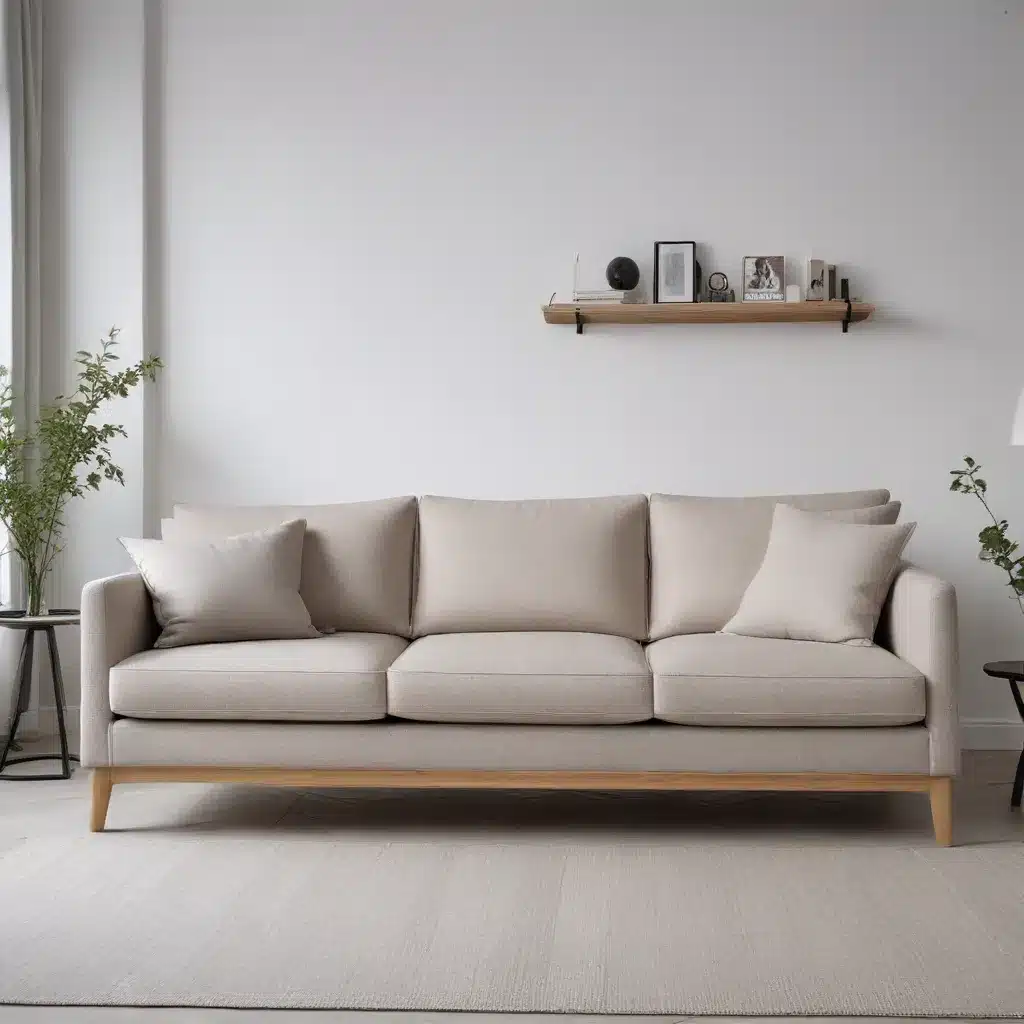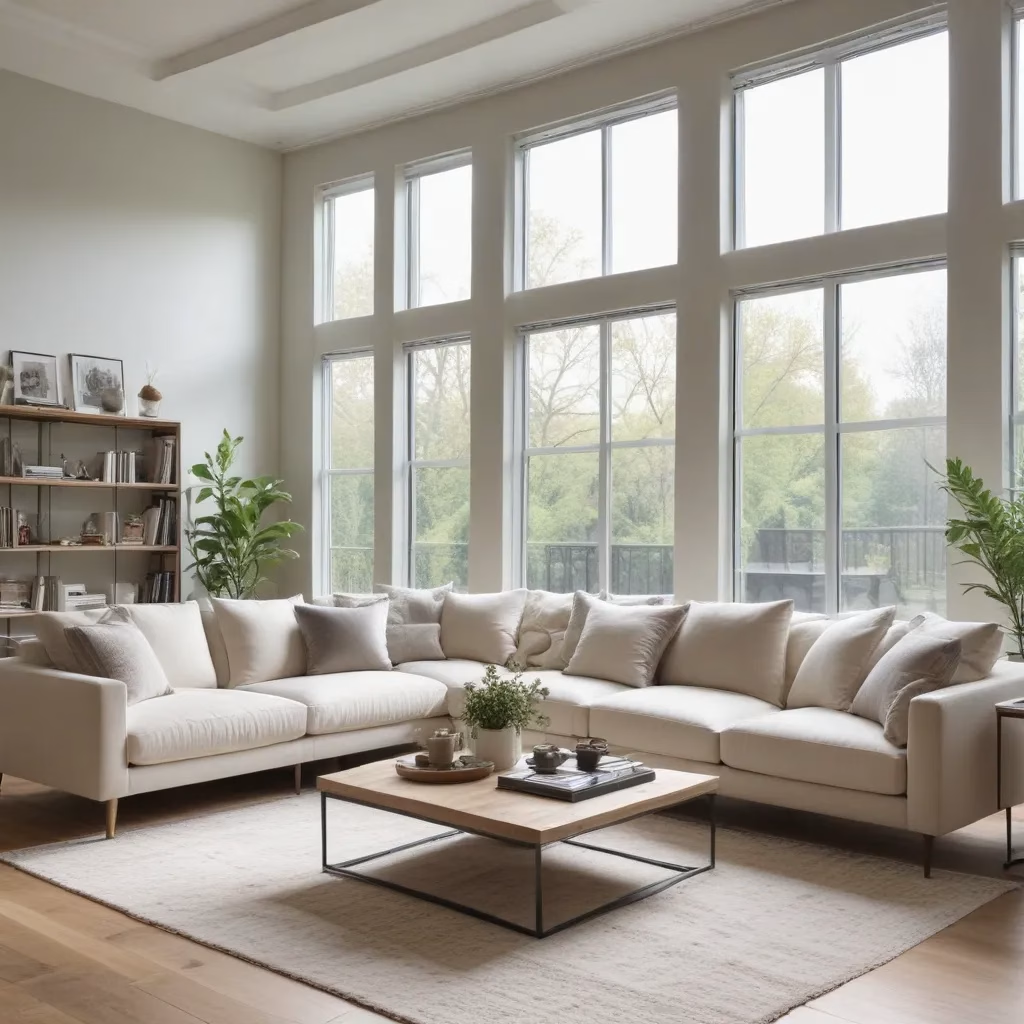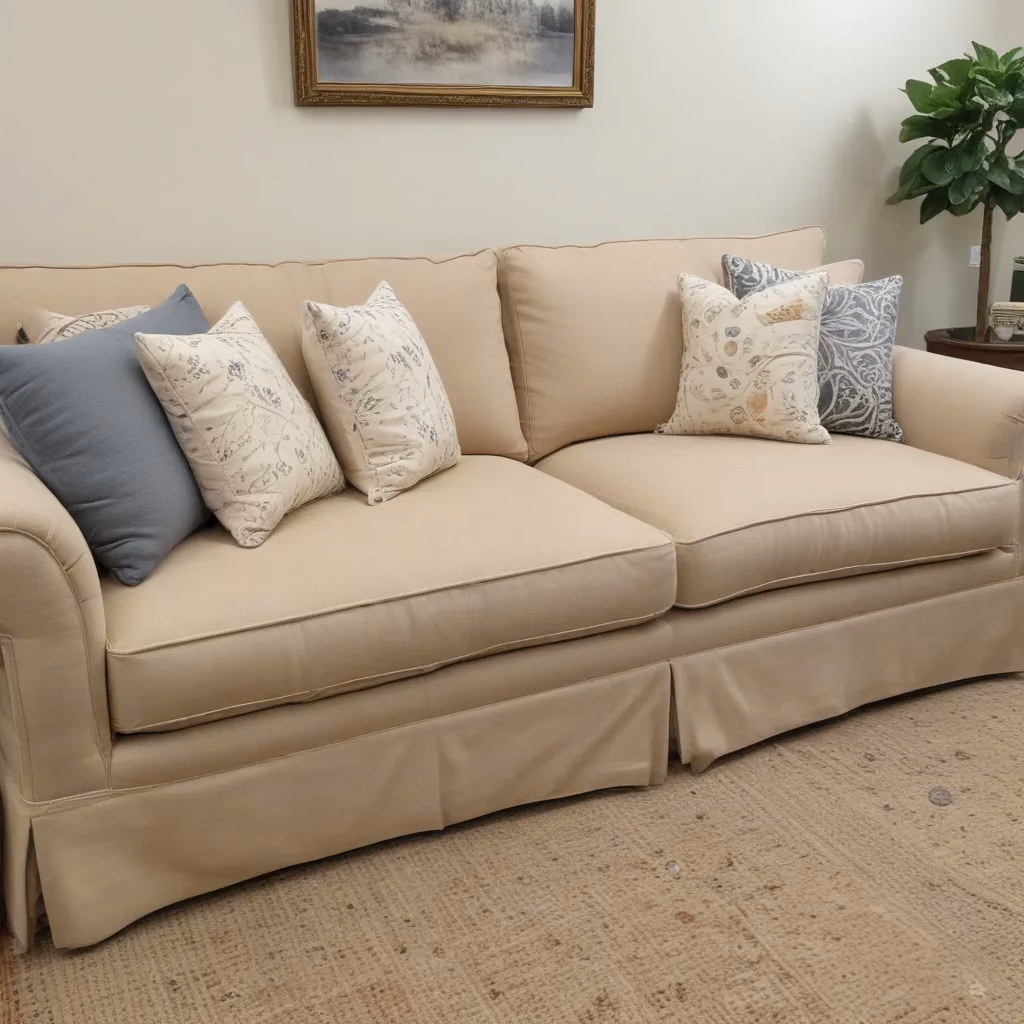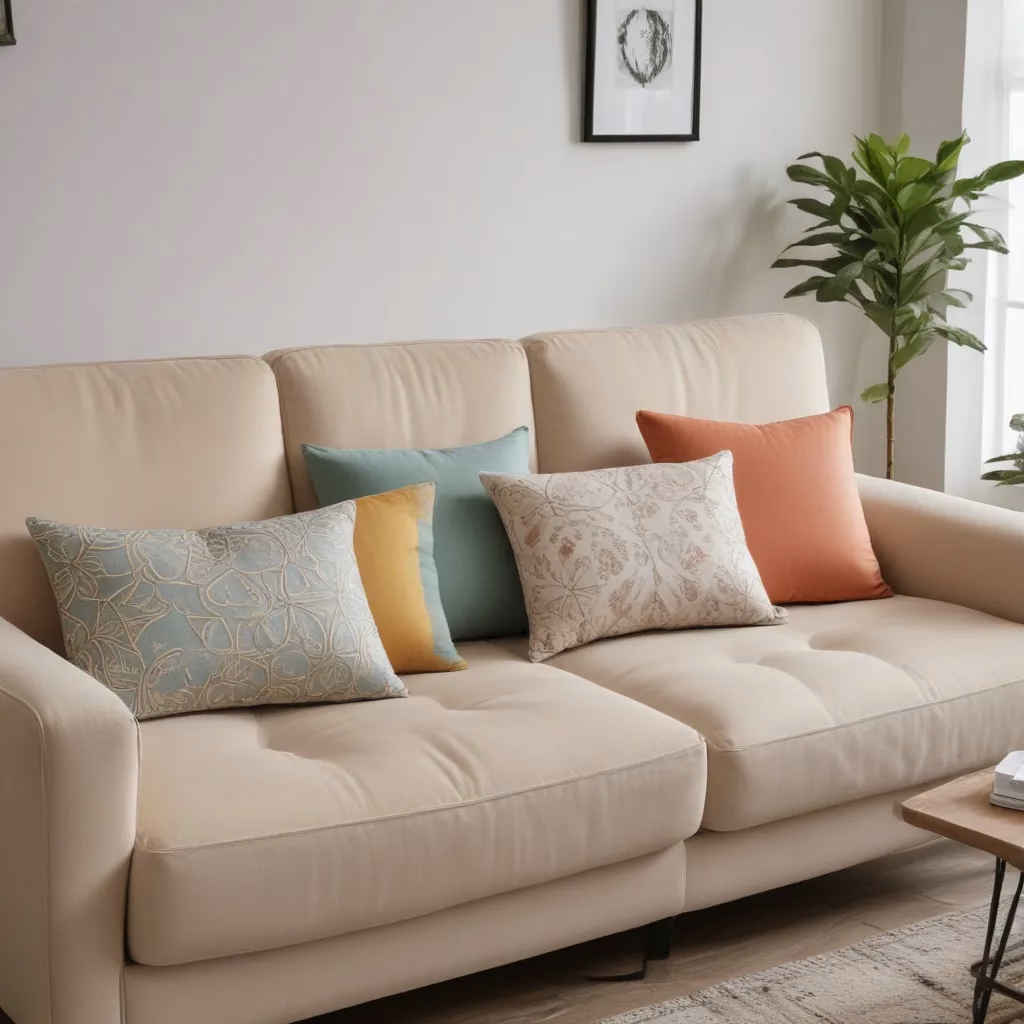
The Allure of Scandinavian-Inspired Sofas
When I first encountered Scandinavian-inspired sofas, I was immediately struck by their effortless blend of form and function. These pieces aren’t just furniture; they’re a philosophy embodied in fabric and frame. The clean lines, the organic materials, and the focus on comfort all speak to a design ethos that values simplicity without sacrificing style.
As someone who’s spent years in the furniture industry, I’ve seen trends come and go. But Scandinavian design? It’s got staying power. Why? Because it taps into something fundamental about how we want to live. We crave spaces that are both beautiful and livable, and that’s exactly what these sofas deliver.
I remember walking into a showroom in Copenhagen years ago. The moment I saw those sleek, minimalist sofas, I knew I was looking at the future of furniture design. The way they seemed to float in the space, inviting you to sit and stay awhile – it was a revelation. And now, I’m thrilled to see this aesthetic making waves in contemporary design circles around the world.
Merging Tradition with Modern Sensibilities
In my experience, the best furniture designs don’t just appear out of thin air. They’re the result of a careful evolution, blending time-honored craftsmanship with contemporary needs. That’s what makes Scandinavian-inspired sofas so special – they’re rooted in tradition but perfectly suited for modern living.
Take the use of wood, for instance. Many Scandinavian sofas feature exposed wooden elements, often in light hues like oak or birch. This isn’t just an aesthetic choice; it’s a nod to the region’s rich woodworking heritage. But these traditional materials are shaped into sleek, modern forms that feel right at home in today’s interiors.
The upholstery, too, reflects this merger of old and new. While you might find classic materials like leather, you’re just as likely to see innovative, eco-friendly fabrics that speak to our growing environmental consciousness. It’s this balance of timeless appeal and forward-thinking design that makes these sofas so versatile and enduring.
The Art of Restraint in Sofa Design
One of the things I admire most about Scandinavian-inspired sofas is their commitment to restraint. In a world where “more is more” often seems to be the prevailing philosophy, these pieces remind us of the power of simplicity. It’s not about stripping away until there’s nothing left; it’s about distilling design down to its purest, most functional form.
This approach requires incredible skill and vision. I’ve watched craftsmen labor over the tiniest details – the curve of an armrest, the angle of a backrest – knowing that in a minimalist design, every element must be perfect. There’s nowhere to hide imperfections when your design is this pared back.
But the results speak for themselves. A well-designed Scandinavian-inspired sofa doesn’t need ornate carvings or flashy patterns to make a statement. Its beauty lies in its proportions, its materials, and the thoughtful way it interacts with the space around it. It’s a lesson in the art of subtlety, one that I think we could all learn from in our approach to home design.
Functionality: The Heart of Scandinavian Design
In my years of working with furniture, I’ve learned that true beauty isn’t just skin deep. A sofa can be gorgeous to look at, but if it’s not comfortable or practical, it’s failed at its primary purpose. This is where Scandinavian design truly shines – functionality is never sacrificed for aesthetics.
I’ve sat on countless sofas in my career, and I can tell you that the best Scandinavian-inspired pieces offer a level of comfort that’s hard to match. The cushions are often firmer than what you might find in overstuffed American styles, but they provide excellent support for long-term sitting. And the frames? They’re built to last, often using sustainable hardwoods that will stand up to years of use.
But functionality goes beyond just comfort and durability. Many Scandinavian sofas incorporate clever storage solutions or modular designs that can adapt to changing needs. I’ve seen sofas with hidden compartments, adjustable backrests, and even built-in side tables. It’s this kind of thoughtful design that makes these pieces so well-suited to modern living, especially in urban environments where space is at a premium.
The Role of Color in Scandinavian Sofa Design
When you think of Scandinavian design, you might picture a world of whites and grays. And while it’s true that neutral tones play a big role in this aesthetic, I’ve found that the use of color in Scandinavian-inspired sofas is actually quite nuanced and sophisticated.
Yes, you’ll find plenty of sofas in shades of cream, beige, and light gray. These colors create a sense of airiness and calm, and they’re incredibly versatile when it comes to fitting into different design schemes. But don’t be surprised to see pops of color too – soft blues inspired by Nordic skies, deep greens that evoke pine forests, or even bold yellows that bring a touch of sunshine to long winter days.
What’s interesting is how these colors are used. Rather than overwhelming patterns or loud prints, you’re more likely to see solid colors or subtle textures. The effect is to draw attention to the form of the sofa itself, letting the shape and materials speak for themselves. It’s a masterclass in using color to enhance, rather than dominate, a space.
Sustainability: A Core Value in Scandinavian Sofa Production
One aspect of Scandinavian-inspired sofa design that I find particularly exciting is the focus on sustainability. This isn’t just a recent trend; it’s been a core value in Scandinavian furniture production for decades. And in today’s world, where we’re all becoming more conscious of our environmental impact, these principles are more relevant than ever.
I’ve visited factories where every scrap of wood is used, either in the furniture itself or as fuel for heating the workshop. I’ve seen upholstery made from recycled plastics that look and feel like luxury fabrics. And I’ve been impressed by the longevity of these pieces – they’re built to last for generations, not just a few years.
This commitment to sustainability extends to the entire lifecycle of the sofa. Many manufacturers offer repair services or replacement parts, encouraging customers to maintain and refurbish their furniture rather than replace it. Some even have take-back programs, ensuring that when a sofa does reach the end of its life, its materials can be recycled or repurposed.
It’s an approach that resonates with many consumers today. We want furniture that not only looks good and functions well but also aligns with our values. Scandinavian-inspired sofas offer just that – a way to furnish our homes beautifully without compromising on our environmental principles.
The Influence of Scandinavian Sofas on Global Design Trends
As someone who’s been in the furniture industry for years, I’ve had a front-row seat to the way Scandinavian design has influenced global trends. It’s been fascinating to watch how the principles of Scandinavian sofa design have been adopted and adapted by designers around the world.
In the United States, for example, I’ve seen a move away from oversized, overstuffed sofas towards sleeker, more streamlined forms inspired by Scandinavian models. In Japan, where space is often at a premium, the multifunctional aspects of Scandinavian sofa design have been enthusiastically embraced.
Even in markets traditionally known for more ornate styles, like Italy or France, I’ve noticed a growing appreciation for the simplicity and functionality of Scandinavian-inspired pieces. It’s not about completely abandoning traditional design languages, but rather incorporating elements of Scandinavian style to create something new and exciting.
This global influence has led to some interesting fusions. I’ve seen sofas that combine Scandinavian forms with Italian leathers, or that incorporate traditional craft techniques from other cultures into a Scandinavian-inspired frame. It’s a testament to the versatility and appeal of this design philosophy that it can be so successfully blended with other styles.
Choosing the Right Scandinavian-Inspired Sofa for Your Space
After years of helping clients select the perfect sofa, I’ve developed a few key principles for choosing a Scandinavian-inspired piece that will work in your space. First and foremost, consider the scale. One of the beauties of Scandinavian design is its ability to make small spaces feel larger, but this only works if you choose a sofa that’s proportionate to your room.
Next, think about your lifestyle. Do you need a sofa that can withstand the rigors of family life, or are you looking for something more suited to formal entertaining? Scandinavian design offers options for both, from hardy, stain-resistant fabrics to elegant leather upholstery.
Color is another important consideration. While neutral tones are a safe bet, don’t be afraid to go bold if it suits your space. I’ve seen stunning interiors built around a colorful Scandinavian-inspired sofa that serves as a focal point for the entire room.
Finally, pay attention to the details. Look for quality construction, sustainable materials, and thoughtful design features. A well-made Scandinavian-inspired sofa is an investment that will serve you well for years to come.
Here’s a quick comparison table to help you navigate your choices:
| Feature | Traditional Scandinavian | Contemporary Scandinavian |
|---|---|---|
| Frame | Solid wood, often visible | Mixed materials, sleeker profile |
| Upholstery | Natural fabrics, leather | Eco-friendly synthetics, bold colors |
| Cushions | Firm, supportive | Range from firm to plush |
| Style | Minimalist, functional | Minimalist with modern touches |
| Colors | Neutral, natural tones | Wider range, including bold hues |
Caring for Your Scandinavian-Inspired Sofa
One of the questions I’m most frequently asked is how to keep a Scandinavian-inspired sofa looking its best. The good news is that these pieces are generally designed with easy maintenance in mind. However, a little care goes a long way in preserving the beauty and functionality of your sofa.
For fabric upholstery, regular vacuuming is key. Use a soft brush attachment to avoid damaging the fabric, and pay special attention to the crevices where dust and crumbs can accumulate. Most spills can be dealt with using a clean, damp cloth – just be sure to blot, not rub, to avoid spreading the stain.
Leather sofas require a different approach. Dust them regularly with a soft, dry cloth, and treat them with a leather conditioner every six months to keep the material supple and prevent cracking. Avoid placing your leather sofa in direct sunlight, as this can cause fading and drying.
For wooden elements, a simple dusting is usually sufficient. If you need to clean more thoroughly, use a slightly damp cloth and dry immediately. Avoid using harsh chemicals or abrasive cleaners, as these can damage the finish.
Remember, prevention is better than cure. Use coasters under drinks, avoid eating on your sofa, and consider throws or slipcovers in high-traffic areas. With proper care, your Scandinavian-inspired sofa will continue to be a beautiful and functional part of your home for many years to come.
The Future of Scandinavian-Inspired Sofa Design
As we look to the future, I’m excited about the continued evolution of Scandinavian-inspired sofa design. While the core principles of simplicity, functionality, and quality craftsmanship remain constant, I’m seeing some interesting trends emerging.
One area of innovation is in materials. As sustainability becomes an ever-more-pressing concern, designers are experimenting with new eco-friendly fabrics and production methods. I’ve seen prototypes of sofas made from recycled ocean plastics, and others that use innovative plant-based foams for cushioning.
Technology is also playing an increasing role. Some manufacturers are incorporating smart features into their sofas, like built-in charging ports or adjustable lumbar support. While these additions are subtle – in keeping with the Scandinavian ethos of unobtrusive functionality – they represent a new direction for sofa design.
Another trend I’m watching with interest is the move towards even greater modularity and flexibility. As our living spaces and lifestyles continue to evolve, furniture that can adapt to changing needs will become increasingly valuable. Imagine a sofa that can easily transform from a single long piece to multiple chairs, or that incorporates workspace elements for our increasingly home-based lives.
Despite these innovations, I believe the essence of Scandinavian-inspired sofa design will remain true to its roots. The focus on creating beautiful, functional, and sustainable pieces that enhance our daily lives is timeless. As we face the challenges of the future, the principles of Scandinavian design – simplicity, quality, and respect for both user and environment – will continue to offer valuable solutions.
In conclusion, Scandinavian-inspired sofas represent more than just a furniture choice – they’re a lifestyle choice. They offer a way to bring simplicity, functionality, and beauty into our homes, creating spaces that are both comfortable and inspiring. Whether you’re furnishing your first apartment or redesigning your family home, consider the timeless appeal of Scandinavian design. It’s an investment in quality, style, and sustainability that you won’t regret.
For more inspiration and to explore a range of Scandinavian-inspired sofas, visit Sofa Spectacular. There, you’ll find a curated selection of pieces that embody the best of this enduring design tradition, ready to transform your space and enhance your daily life.



